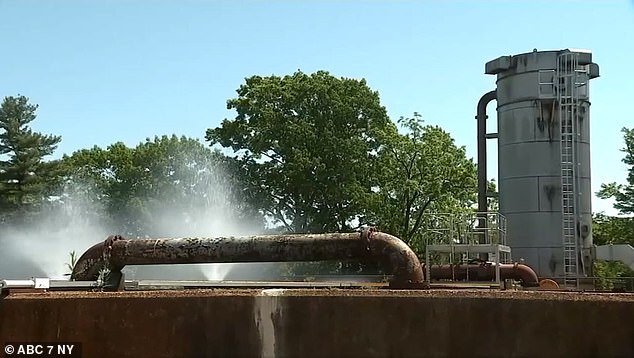A scientist has discovered that drinking water on Long Island has high levels of cancer-causing chemicals in its century-old water system, and officials are asking for federal help to replace it.
An agent known as 1,4 dioxane, a carcinogen linked to liver and kidney cancer, was found in the nine wells in the town of Hempstead, it reported. WABC.
Traces of “forever chemicals” were also found: microscopic man-made chemicals known as perfluoroalkyl substances (PFAS) that can take thousands of years to break down in the environment or the human body.
Scientists said the chemicals leaked into the system through commercial and industrial sources over time, and now the city is looking for ways to provide drinking water to more than 58,000 residents.
“We don’t want our residents to panic, but we want them to be informed,” said village Mayor Waylyn Hobbs Jr.
An agent known as 1,4 dioxane, a carcinogen linked to liver and kidney cancer, and traces of ‘forever chemicals’ were found in the town of Hempstead’s drinking water.
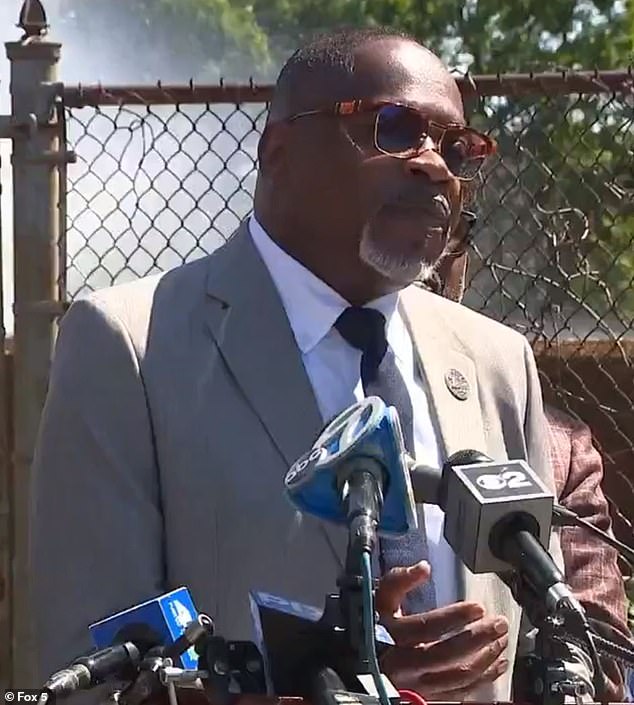
Village Mayor Waylyn Hobbs Jr. (pictured) warned the Village’s more than 58,000 residents about the chemicals and said they are trying to replace the treatment plant.
“Although studies are still being done on the effect of this on humans, most of the testing has been done on laboratory animals.”
“Here in the Town of Hempstead, we don’t want to wait to find out what results are affecting our residents, which is why we are acting now to ensure we eliminate the high levels of dioxins in our water.” Hobbs said.
The New York State Department of Health said: “The water supplied in the Village of Hempstead does not pose a significant health risk and remains acceptable for all uses, as the MCLS are set well below the levels that are known to cause health effects.”
“While the water supply has had samples that exceeded the maximum contaminant level (MCL), they have taken interim measures to minimize 1,4-dioxane in the delivered water.”
The Village has drawn up plans to replace the water treatment plant and estimates a new facility would cost $55 million, it reported. FOX 5 New York.
Hobbs said the Village Board voted unanimously to make a measure so the Village can obtain a $50 million bond.
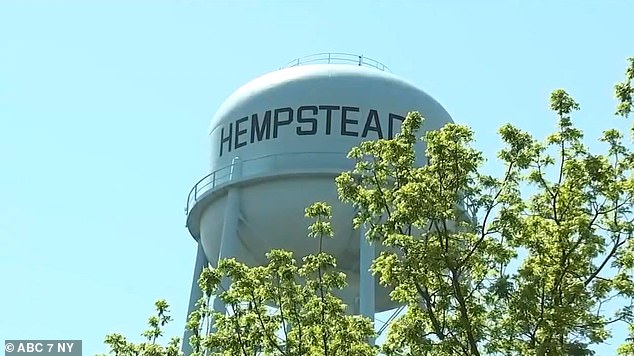
The Village has drawn up plans to replace the water treatment plant and estimates a new facility would cost $55 million.
Which means they voted to borrow $50 million to finance the project, but are hoping the federal government will help cover the bill.
Gov. Kathy Hochul’s office said they have given Long Island $700 million for drinking water, including $72 million for the city of Hempstead.
Village officials said the money was only for specific projects. They desperately need help because they only have one treatment plant and need to be able to supply water when it is closed.
Construction is scheduled to begin in the fall and is expected to take between 2 and 5 years to complete.
Recent EPA data found that more than 70 million Americans drink tap water containing toxic “forever chemicals” linked to cancer.
The hardest hit areas are along the East Coast, including New York, Massachusetts and Pennsylvania.
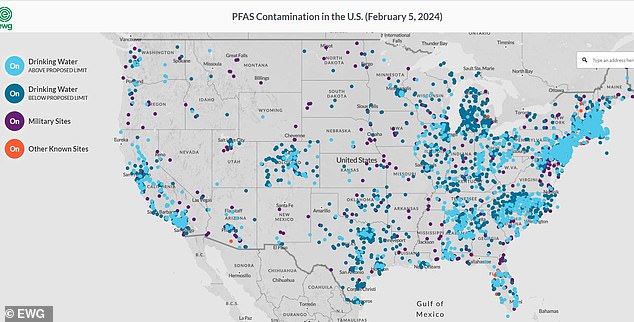
Recent EPA data found that more than 70 million Americans drink tap water containing toxic “forever chemicals” linked to cancer.

‘Forever chemicals’ are microscopic man-made chemicals called perfluoroalkyl substances (PFAS) that can take thousands of years to break down.
The main purpose of PFAS compounds is to repel water and oil, which is what makes nonstick cookware much easier to clean and why certain jackets and tents can withstand rain.
Texas researchers found chemicals in seven out of 10 insecticides, but six had extremely large amounts of a particularly dangerous type that has been strongly linked to cancer.
PFAS can leach into the water supply simply by washing dishes. Compounds can also end up in our food if the packaging is made to be grease-resistant (think fast-food cheeseburgers) or if the nonstick coating on pots and pans begins to deteriorate.
PFAS are also common in pesticides used to feed crops.
This produces chemical-rich runoff that can enter the drinking water supply.
In April, chemical drums filled with toxic liquid were unearthed in the town of Oyster Bay on Long Island, where residents said there has been a mysterious increase in cancer over the years.
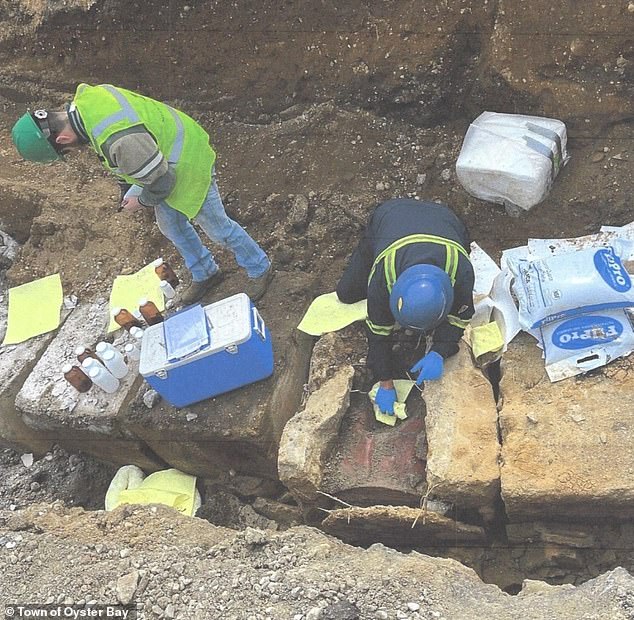
In April, chemical drums filled with toxic liquid were unearthed in the town of Oyster Bay on Long Island.
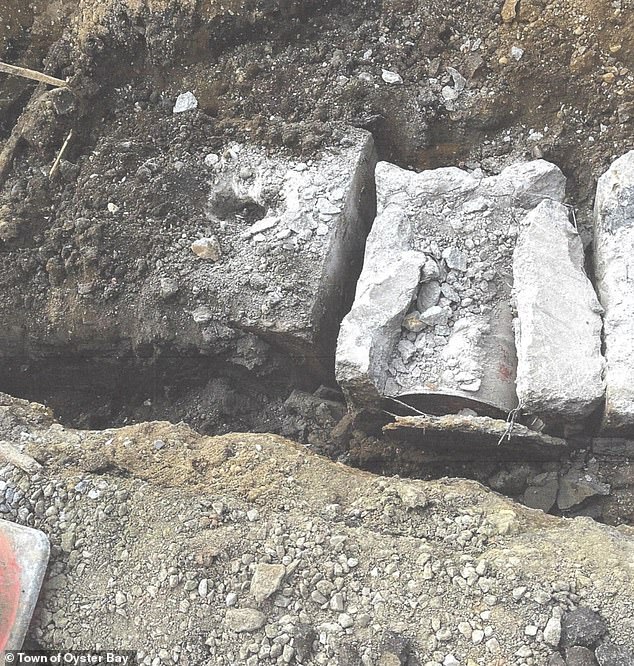
The drums were buried by Northrop Grumman when it operated an aerospace facility in the city between the 1950s and 1990s.
Construction workers unearthed six barrels of chlorinated solvents and used oil.
The drums were buried by Northrop Grumman when it operated an aerospace facility in the city between the 1950s and 1990s.
Authorities fear the waste has seeped into the ground and is on its way to the public drinking water supply.
The city is home to more than 17,200 people who have long raised concerns about Grumman Aerospace waste, specifically a four-mile-long carcinogenic plume flowing underground that they say contributed to a rise in cancer diagnoses.
Residents also found toxic compounds in their attacks and in the soil, and a family of three who lived near the park suffered from cancer.

